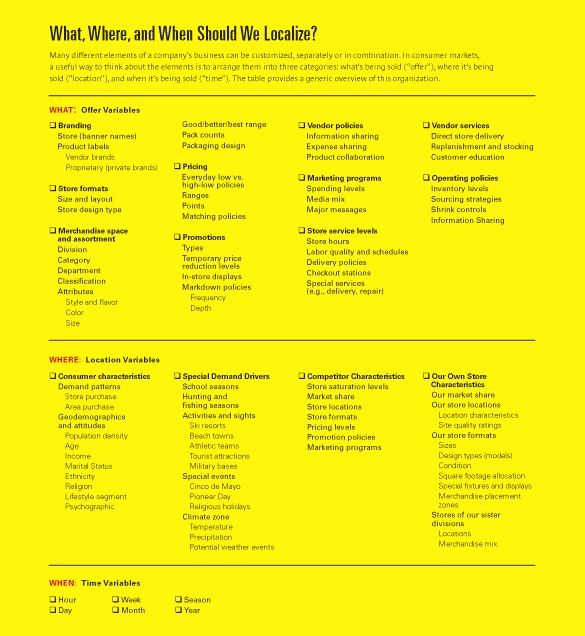Content localization mistakes cost you - here's how to fix them (every time)
Direct translations don’t work. Learn how to optimize your content for international SEO, cultural adaptation, and audience engagement.

Even the biggest brands mess up content localization—and when they do, it costs them. Sales drop, trust erodes, and engagement tanks. Localization isn’t just about translating words; it’s about making content resonate with the people who matter—your customers.
Getting it right isn’t just a nice-to-have. More than half of all consumers prefer product information in their own language. If they can’t fully understand your message, they won’t engage, let alone buy.
The problem? Localization mistakes happen all the time. They sneak into campaigns, product descriptions, and ad copy, turning what should be a seamless experience into one that feels off.
Content Collision (C2) works with global tech companies expanding in Southeast Asia, especially Indonesia. We’ve seen firsthand how small missteps in localization can hold back even the most well-funded market entries. But here’s the good news: Every localization mistake has a fix.
This guide breaks down the 10 biggest content localization mistakes—and exactly how to fix them every time.
💡 Pressed for time? Here’s what matters:
- Localization mistakes cost brands sales, trust, and engagement. Translation alone isn’t enough—content needs to fit local culture, tone, and search behavior.
- Common mistakes include missing banned words, skipping local reviews, forcing a single message, ignoring regional formatting, and poorly localizing SEO.
- Tone, idioms, and product names don’t always translate well, and legal requirements vary by country.
- Fixing these issues ensures content resonates, builds trust, and drives engagement in new markets.
1. Your team don’t have list of banned words
Entering new markets brings a challenge: what words might offend people locally? The variety in dialects and languages, even within one place, makes localizing content complex. Therefore, starting by building a list of words to avoid for each target area can help prevent problems for your brand.
These problems can arise from small misunderstandings that can have a big impact, with some even leading to potential image crises. So, knowing your audience in detail by looking at their demographic aspects is a great way to start.
Here's what you can look at: consumer habits, regional demographics, attitudes, and relevant timing. This helps ensure content fits well with local values and avoids mistakes.

Creating this list is a team effort. People who know the local culture and language should work together on it. The goal is not just translating words, but to understand their deeper meanings in the local context. This work needs to continue as languages and cultural norms change.
2. Skipping 2 layers reviews from the local team
We get it. Sometimes, for speed's sake, content needs to get out to the public quickly. But what's worse? When the public mistakes your content's main message.
This mistake usually comes from relying solely on translation tools for content review. This is the classic beginning of every "lost in translation" phenomenon.
The thing is, tools can't understand the little things in a language, and one person might miss something important or be biased.
A better way is a two-step review by a local team. First, someone who knows the target language well translates or changes the content. Then, another person on the team checks it to make sure it's accurate and makes sense culturally.
This two-step process helps in a few ways. It catches mistakes and ensures the content connects with the target audience. Working with a local team helps you learn about the culture, which is useful for future projects.
By working together, you gain a deeper understanding of the market, which is key to successful localization.

3. Ignoring local relevance by pushing a single message
The meaning of "relevance" in content creation isn't fixed. Content successful in one market might not work in another. In marketing, this can happen when companies focus on promoting existing messages or features without considering if they'll fit the new audience culturally.
To connect with a new market, your message needs to be relevant to the local audience. This means considering their interests, needs, and cultural background.
When you have done these, there is a possibility you need to change a bit of your marketing plan, even to the creative aspect. But at least, that's better than just assuming your content will work well in the new market.
To conduct thorough market research like this, you need to work with local experts or teams familiar with the cultural landscape. This approach allows companies to adapt content to local preferences and expectations, making it more engaging and effective.
Additionally, involving local people in the content creation process can provide valuable insights and feedback to the current marketing plan, but also provide you feedback that later on beneficial to the evaluation process.
4. Assuming global formatting works everywhere
Audiences expect content to be formatted for their region. Ignoring local format can confuse readers, and this small mistake can distort the message of your campaign.
Logically, with limited time to grab the audience's attention, they should be focusing on your product message, not the region where your formatting originates.
Use the right date format, time zone, and currency symbol. If mentioning prices, convert them to the local currency. This makes your content clear, reliable, and effective for your target audience.
5. Poor SEO & search engine behavior misalignment
Directly translating keywords is a fast track to tanking your search rankings. What works in one market won’t necessarily work in another. Different regions have their own search habits, preferred phrases, and even unique slang that influence what people type into Google.
For example, a keyword like “cheap flights” might perform well in one country, while another market prefers “affordable airfare.”
In some cases, local users might search for synonyms, related terms, or entirely different phrases that better fit their language and culture. If you don’t adapt, you’re invisible in search results—even with perfect localization elsewhere.
How to fix it? Instead of relying on direct translations, use local keyword research tools like Google Keyword Planner, Ahrefs, or Semrush. Work with a local SEO expert who understands what your audience actually searches for and how search intent differs by region.
Optimizing for local search engines isn’t just about visibility—it’s about making sure your content reaches the right people, at the right time, using words that actually match how they search.
6. Assuming tone and style work everywhere
Think your messaging works the same way everywhere? Think again.
Just because two audiences share similar demographics doesn’t mean they respond the same way. Humor, formality, and even sentence structure vary across cultures—and getting it wrong can make your brand feel out of touch.
These differences don’t just make your creative team’s job harder—they also influence which platforms and media perform best in different regions.
Fix it: Create a Localization Style Guide to ensure your brand’s tone, word choice, and formatting stay consistent across markets. This helps maintain trust and clarity while adapting to cultural nuances.
Example: Some markets prefer direct and concise messaging, while others value a more formal or descriptive approach. A localization style guide ensures your brand voice remains consistent yet culturally relevant.
Don’t assume your message translates seamlessly—test it. Regularly gather feedback from local teams or focus groups to refine your tone and make sure your content truly connects with the audience.
7. Missing out on local celebrations
Holidays and festivals are important events everywhere, but their timing varies globally.
While your product might be relevant year-round, strategically aligning your marketing efforts with local celebrations allows for better preparation. This ensures you can craft the most impactful narrative for your product introduction, minimizing any potential cultural misunderstandings.
Understanding local holidays and festivals opens doors for more effective marketing. Consider creating special promotions or greetings tailored to Indonesian holidays like Idul Fitri or Independence Day.
This demonstrates cultural awareness and fosters deeper connections with your audience. Although some planning is necessary, it can significantly enhance the effectiveness of your marketing efforts.
8. Pushing idioms into the area
Idioms might make your content catchy—but they don’t always translate. Many phrases are deeply rooted in cultural context, making them impossible to understand (or even offensive) in other languages. Directly translating idioms can confuse, mislead, or completely change your message.
The better approach? Instead of literal translation, use Transcreation—a process where content is rewritten to preserve meaning while adapting it culturally.
For example, the English phrase “hit the ground running” is commonly used in the U.S. to describe someone starting a task or project with full speed and efficiency. However, if translated literally into Bahasa Indonesia as “memukul tanah sambil berlari,” it would sound awkward and confusing, as the phrase has no cultural reference in the Indonesian language.
A better approach? Use a local expression that conveys the same meaning in a way that feels natural to the audience.
In this case, a more fitting Indonesian phrase would be “langsung tancap gas.” This phrase, which literally means “step on the gas immediately,” is widely understood in Indonesia as starting something quickly and decisively.
Unlike a direct translation, this localized version captures the essence of urgency and momentum while aligning with the way Indonesians naturally express the concept.
This is where transcreation comes in. Instead of forcing a literal translation, adapting idioms to culturally relevant expressions ensures your content sounds natural and resonates with the target audience—without losing the original intent.
Work with local language experts to ensure your messaging aligns with cultural nuances while staying true to your brand voice. The goal isn’t just translation—it’s making sure your content feels natural and relatable, no matter the market.
9. Pushing product name into the area
Picking a product name that works everywhere is tough. A key factor? Making sure it's easy for your target audience to say and remember in their local language. Complicated or strange names can make it hard for people to talk about and recommend your product.
For international markets, aim for simple and clear names. This might mean creating a new, localized name that fits the language and culture. Market testing and getting feedback from local consumers helps you understand how a name will be received and if it causes any problems.
By choosing a catchy and memorable name, you can improve your brand's reach and compete better in new markets.
10. Overlooking the need for a local regulatory expert
Different countries have different rules on things like copyright, trademarks, and even certain words or phrases. A misstep here can lead to serious legal trouble, like copyright infringement.
To avoid this, have someone on your team stay on top of these local regulations. This applies not just to text, but also to images, symbols, and any creative assets you use. What's okay in one place might be offensive elsewhere, and nobody wants an international PR nightmare!
By including legal review in your localization process, you can avoid violating local laws or causing cultural offense. Having a dedicated point person shows your respect for local cultures and legal systems. This careful approach can save you money on lawsuits and protect your brand reputation globally. Investing in this area is key to smooth and respectful international marketing.
FAQs
How do I measure localization success?
The best way to gauge whether your localization efforts are working is by tracking conversion rates, engagement metrics, and customer feedback.
- Conversion rates: Are localized pages or campaigns driving more sign-ups, purchases, or downloads?
- Engagement metrics: Look at bounce rates, time on page, and social shares—if users are engaging with your content, it’s a sign that it resonates.
- Customer feedback: Monitor support inquiries, reviews, and direct feedback to spot language or cultural issues that need refinement.
What tools help with localization?
Several localization tools can streamline the process and ensure consistency across languages:
- Smartling – AI-powered translation management with automation features.
- Transifex – A cloud-based platform for continuous localization.
- AWS Localization – Scalable translation and localization solutions for global businesses.
- Lokalise – A user-friendly tool designed for agile teams managing multiple languages.
Each tool has different strengths depending on your localization workflow and content type.
How much does localization cost?
Localization costs vary based on market complexity, number of languages, and content volume.
- Simple projects (e.g., translating blog posts) may cost a few hundred dollars per language.
- More complex projects (e.g., software, product UI, legal documents) require professional translators, SEO adaptation, and cultural consulting, which can cost thousands per language.
- Ongoing localization workflows (for global brands) often use subscription-based tools combined with expert translators for quality assurance.
Investing in high-quality localization saves more in the long run by improving customer experience, retention, and conversions.


